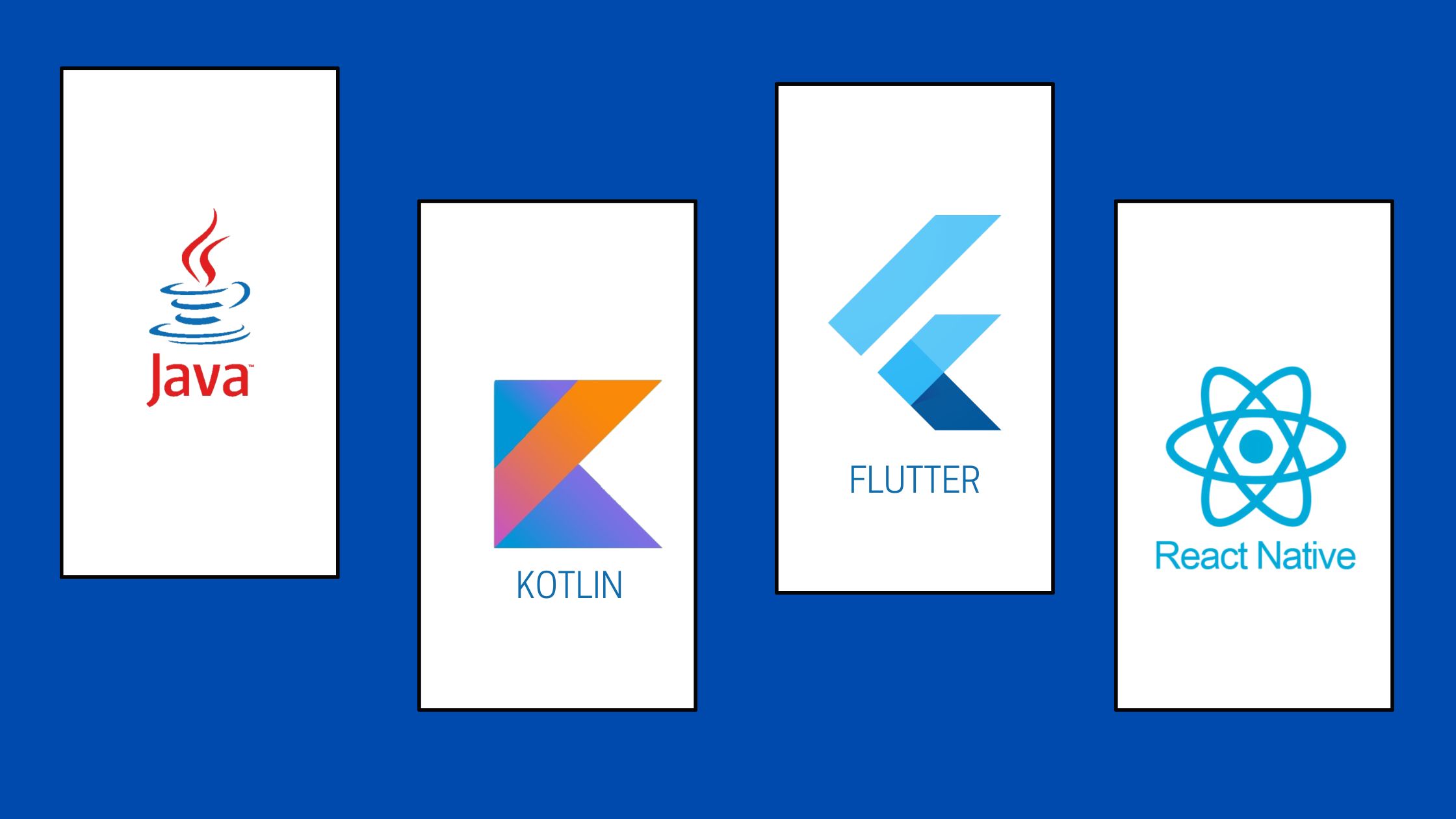
To be highly successful in today’s fast evolving digital space, a proper technology stack for Android app development needs to be selected. Many technologies are at disposal including Java, Kotlin, Flutter, React native, and several others and the developers as well as the businesses have to select the best among them suitable for their needs in terms of optimization, user experience and scalability. The goal of this blog will be to analyze each of these technologies – their relevance and usage in mobile application development and prepare you accordingly in order to avoid wrong decisions.
Understanding the Technologies
What is Java?
Java has been at the epicenter of Android development since time immemorial, even during the creation of the platform. This Enable developers to construct efficient applications because it is an object-oriented language with a lot of potential. The integration of Android SDKs is made easier with the use of Java’s rich libraries and frameworks which makes it a dependable language for constructing Native apps.
Importance of Java in Android Development
Established Ecosystem: Having over 20 years of development, Java incorporates a rich ecosystem of libraries and tools.
Community Support: There is a big community which means there are lots of resources resolving issues and for enhancing learning.
Cross-Platform Compatibility: Java can be utilized in more fields than Android such as in the web and server-side applications.
What is Kotlin?
Since Google designated Kotlin a primary language in 2017, it has steadily become the go-to for Android developers. Kotlin is created to be entirely interchangeable with Java; because it solves many of Java’s complexities, the complexity of the code can be enhanced, as well as its readability and safety.
Benefits of Using Kotlin
-Concise Syntax: Kotlin reduces boilerplate code significantly compared to Java.
-Null Safety: Built-in null safety features minimize runtime errors.
– Interoperability with Java: Developers can leverage existing Java libraries without issues.
The Rise of Cross-Platform Frameworks
What is Flutter?
Flutter is a free and open-source UI development kit created by Google that makes it easy to build applications that are natively compiled for iOS and Android, as well as for web browsers and desktop operating systems, using one code. Flutter developers to use the Dart programming language and offers a collection of pre-defined widgets for faster UI constructions.
Advantages of Flutter
Hot Reload Feature: This allows developers to see changes in real-time without restarting the app.
Rich UI Components: Customizable widgets enable developers to create visually appealing applications.
Performance: Flutter applications run at native speed due to direct compilation to machine code.
What is React Native?
Originally developed by Facebook, React Native seeks to interact with native components through the use of JavaScript and React to build mobile applications. It helps in the development of applications that are compatible with various platforms and have a native user experience.
Key Features of React Native
Single Codebase: One source code can be used for both the iOS and Android platform applications.
Large Community Support: Many libraries and tools are offered thanks to such an ecosystem.
Hot Reloading: As it is with Flutter, this is the feature that enables changes in real-time while the development is going on.
Choosing the Right Technology
When thinking about developing an Android application, the choice of technology is a key factor. The factors that you should consider are:
- Project Requirements:
- For apps that need tight coupling with the android features or high performance, kotlin or java would be a better fit.
- In case you strive for cross-platform reach and opt for uniform UI/UX, Flutter or React Native may work.
- Team Expertise:
- Use the skill sets that your team has. If your team has worked in Java script/web development, React Native can be easier to adopt.
- For teams that are already familiar with Dart or plan to learn it fast, flutter can be a good opportunity.
- Development Speed vs Performance:
- Although both Flutter and React Native would enable cross-platform apps and speed up time to market, native apps developed in Java or Kotlin would ultimately outperform such apps.
- Long-term Maintenance:
- Think about who will maintain the application in the maintenance phase. If you manage the Android and iOS development teams separately, it will be simpler to support native applications in the future.
Real-Life Examples
Based on their particular requirements, many successful businesses adopted these technologies:
- Kotlin: Trello integrates Kotlin into its Android app because of its performance and straightforward integration with existing Java code.
- Flutter: Multiple ecosystems like the Alibaba are utilizing Flutter for providing an effortless shopping experience.
- React Native: Facebook reportedly relies on React Native a lot in its mobile applications to provide responsive user experience across devices.
Conclusion
Choosing the right technology for Android app development is pivotal in ensuring your project’s success. Each option—Java, Kotlin, Flutter, and React Native—has its unique strengths and weaknesses that cater to different project requirements and team capabilities. By understanding these technologies’ core features and benefits, you can make an informed decision that aligns with your business goals.
If you’re looking for expert guidance on mobile app development or need assistance choosing the right technology stack for your project, feel free to explore our services or contact us today! Meta Description: Explore key insights on choosing between Java, Kotlin, Flutter & React Native for Android development. Get expert advice tailored for your project needs!







